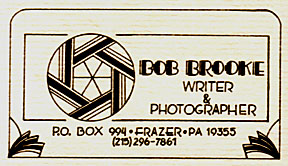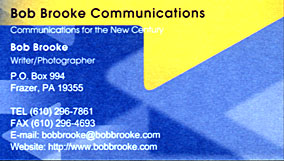You’re in the midst of a project and you need some information that you know you have in a file from a previous article. But try as you might, you just can’t put your hands on that file. After an hour or more looking for it, you become frustrated and give up. By now, the motivation you had to continue writing has passed, so you do something else. Annoying as this situation may be, it’s an all-to-common occurrence among writers. If you were better organized, perhaps this wouldn’t happen.
Even in today’s seemingly paperless world, writers usually amass a huge volume of paper files and books. Most like to have information at their fingertips. And while you can easily search for anything on the Internet, there are some offline sources that you’ve gathered that you prefer to use.
So how can you organize your writing office for the most efficiency which will eventually lead to more writing jobs. Having information at hand means that you can complete jobs faster and in the end increase your income.
To get organized, it’s best to start out with a plan. Think like a journalist. The key is the five W’s—who, what , when, where, and why—plus how. Answer these concretely to know what to keep and what to discard.
Naturally, you’ll want to keep a file on each article and story your write and several, if not a whole file box full, for each book. All those files will take up valuable space. If you don’t allow for them in your overall plan for your office, then you will be undermined later on.
Photos of home offices in magazines and on the Internet show perhaps one or two filing cabinets. That’s just unrealistic. While they may contain frequently used files, all the rest of the files must be hidden. In fact, you should consider a second storage area in your home for your archived files. These are all the ones from finished writing projects. While you may be lucky to have a basement, attic, or garage in which to store them, others living in smaller spaces may have to resort to offsite self-storage, which over time can be expensive.
You need to get organized from the start to increase productivity, but it’s never too late to start. Don’t try to do it all at once. Organize one part of your office at a time----books, files, research notes, photos, etc.
Let’s begin with files, both computer and paper. Start by finding the right containers. Filing cabinets work for files used often while cardboard filing boxes, sold at office-supply stores, work well for archived files. In the beginning, you’ll probably combine subjects in one box, but later on, you’ll need to divide boxes up by subject. Keep your system logical to make it easy to find what you want. Alphabetizing always helps.
Do the same with your computer files. Don’t follow Window’s or MAC’s plan and put all your files in one folder. Think of the folders in your computer the same way you think of those in your filing cabinets and boxes. In fact, you may want to create dividers for your paper files that match the names of the folders in your computer that contain related files.
A good way to ensure that you don’t lose any of your work is put install a second hard drive—or have someone else do it for you. Another alternative is to use an external hard drive that connects to our computer via a USB cable. Either way, your files will be safe if your computer crashes. Unless your second hard drive, dedicated to your data, fails, your files will be safe because when a computer crashes, it’s the main drive that does so.
Next week, we’ll look at continuing the process, but before then, create a plan of organization and make an Organizing To-Do List.
Showing posts with label paper. Show all posts
Showing posts with label paper. Show all posts
Saturday, July 25, 2015
Organizing for Success
Labels:
boxes,
cabinets,
computer,
files,
freelance,
hard drive,
MAC,
organization,
paper,
plan,
subjects,
success,
To-do list,
Windows,
writing
Saturday, March 17, 2012
Keeping Your Supply Closet Stocked
 A whole lot has changed for me as a freelance writer in the past two decades, at least as far as keeping my supply closet stocked. It used to be that when I needed office supplies, my only option was a mom and pop office supply store that sold most of their items at relatively high prices. Today, that’s all changed.
A whole lot has changed for me as a freelance writer in the past two decades, at least as far as keeping my supply closet stocked. It used to be that when I needed office supplies, my only option was a mom and pop office supply store that sold most of their items at relatively high prices. Today, that’s all changed.When I first started freelancing in the mid-1980s, I did all of my work on a typewriter. Then I had to worry about keeping fresh ribbons and whiteout handy, along with standard copy paper. In those days, I didn’t have print cartridges to deal with or other accessories of the Computer Age.
Besides the standard office supplies—paper clips, rubber bands, stapler, labels, postage stamps, pens, pencils, calculators, index cards, and file folders—the Computer Age has its own set of office supplies—printing paper, printer cartridges, software, CDs, DVDs, thumb drives, etc. So how do I keep all of these items in supply without going over my budget? The answer is easy, diversify.
The most important supplies, at least at the beginning, was my letterhead and related stationery with my logo or business address on it. Add to this my invoices—I can’t get paid without them. All of these items carry my business image to the larger business community, so it was imperative that they look professional. I designed my first letterhead and business cards myself using a scissors and glue to cut and paste the designs. I had to take these to a local printer who charged me dearly for them. In fact, in those days I also had to go to his place to make copies.
 Today, I design, produce, and print my letterhead and stationery, as I need it, using my computer and printer. I get spiffy business cards at a substantial discount from VistaPrint.com. I can get 250 of them for free, plus the cost of shipping, as long as I use one of their designs. I get compliments about them all the time. To make sure everything goes together, I design my letterhead to go with the existing template cards. I can also get the cards custom-made by VistaPrint for a bit more.
Today, I design, produce, and print my letterhead and stationery, as I need it, using my computer and printer. I get spiffy business cards at a substantial discount from VistaPrint.com. I can get 250 of them for free, plus the cost of shipping, as long as I use one of their designs. I get compliments about them all the time. To make sure everything goes together, I design my letterhead to go with the existing template cards. I can also get the cards custom-made by VistaPrint for a bit more. I do the same for my invoices. Originally, I purchased a pad of blank ones at the stationery store. Then I designed my own when I began sending them all by E-mail. I create my invoice in my word processor, then copy and paste it below my signature in the E-mail message. I add a note within the invoice for the person receiving it to print it and send it along to their accounts receivable department.
When I began freelancing, it was important to have a business phone and be listed in the Yellow Pages. Do they even have them anymore? (I jest.) Today, my regular phone works just fine, but along with it I have my Internet connection, which just got boosted to “super zippy” speed through Verizon FIOS. Add to these connections to the outside world is my cell phone. No, not the pay-by-the-month, all-inclusive plan, but just the plain pre-pay variety through Tracfone. I find this more than adequately fulfills my needs.
So what about the rest of my office supplies? Sure, I can opt to go to Staples, Office Max, or Office Depot to buy what I need, but I find that at those places, I have to buy in larger quantities. I learned as the years went by that I don’t need 10,000 paper clips, a 1,000 rubber bands, and a box of 10 reams of paper. The little money I might save buying in such quantities is offset by my not using very many of them at one time. I also keep my eye pealed for sales on these items from local drug and discount stores, especially in August and September before the start of school.
The item that costs the most is print cartridges. Instead of paying nearly $30 for one cartridge, I buy refurbished ones for my HP printer from LDProducts.com. I can buy three cartridges from them for what I have to pay for one at Staples. Before LDProducts, I purchased cartridges from a similar company that I discovered at a local computer show. If I’m in a pinch, I can always take an empty HP cartridge to Walgreens to have it refilled for a few dollars more than the price of one from LD. For this reason, I make sure I have an extra HP cartridge or two lying around my office.
If I do want to purchase office supplies in bulk, there are plenty of places online that offer larger amounts at reasonable prices, often with free shipping for orders of $50 or more.
Postage used to take up a large chunk of my budget. Today, I do just about all my correspondence by E-mail, including sending complete book manuscripts to my publishers. So now I buy a book of 20 stamps at a time, enough to last me for a month or two. Soon I may be paying most of my bills online, saving me even more on postage. When I do purchase postage of any kind, I always ask for a receipt.
When I’m traveling for research or on assignment, I carry some basic supplies with me. I use a larger ZipLoc bag to hold a few sheets of printed letterhead and envelopes, some business cards, stamps, 3x5 cards, paper clips, rubber bands, a couple of extra ballpoint pens (black, red, and blue), a small block of StickyNotes, a roll of Magic tape, a small pair of scissors, and a miniature stapler. I also stick a few empty manila file folders into my computer bag. I used to have to carry tapes and batteries for my tape recorder, but today now I use a digital recorder which requires neither.
Labels:
business cards,
cartridge,
freelance,
invoice,
letterhead,
office,
Office Depot,
Office Max,
paper,
postage,
printer,
Staples,
supplies,
USPS,
VistaPrint,
writing
Subscribe to:
Posts (Atom)


